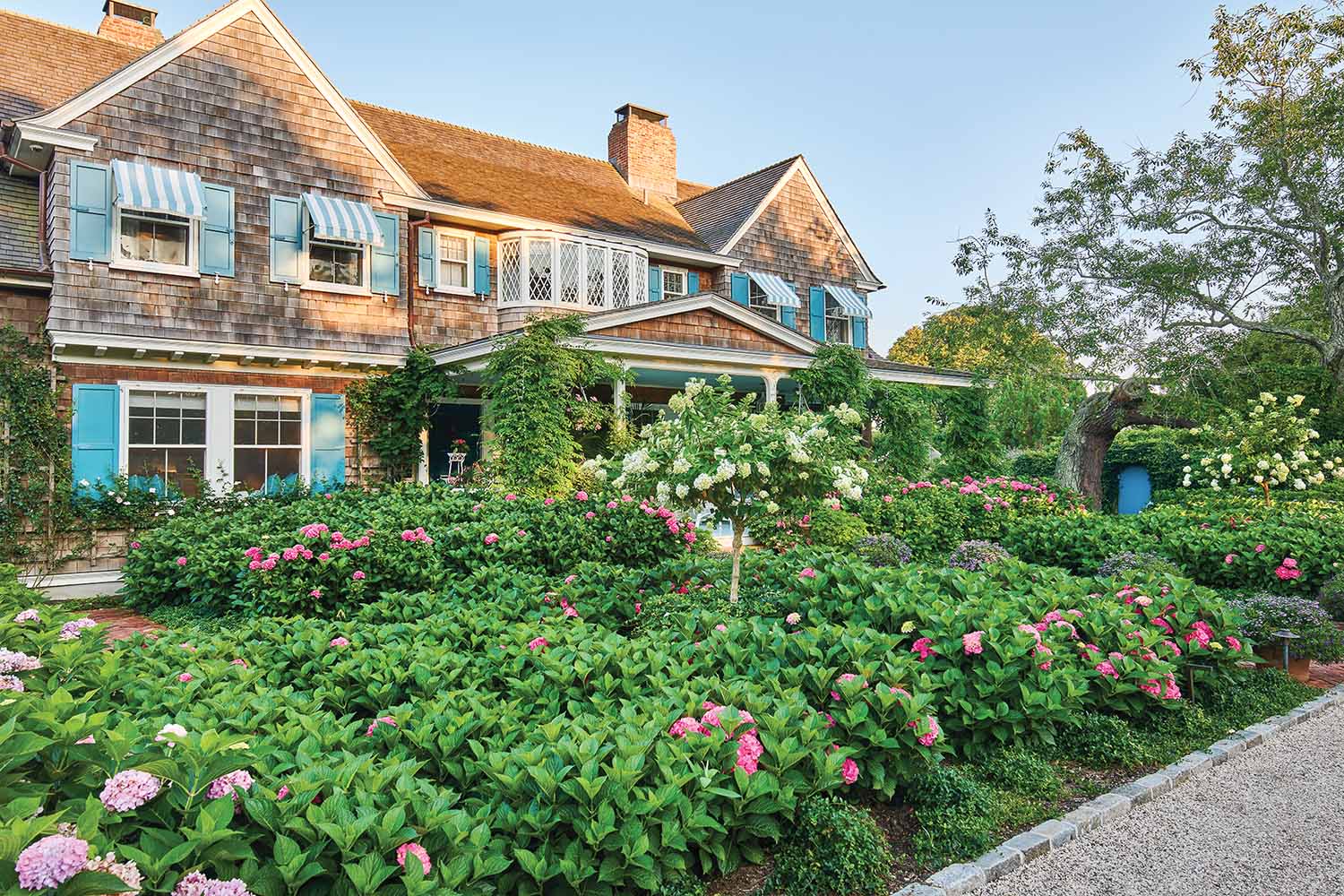
Photo by Michael Mundy
Welcoming beds of hydrangeas blanket the approach to the house.
In this era of buy old, tear down, build big, Liz Lange has bucked the trend. While she did buy old (a 100-year-old property in East Hampton, New York), she chose to respectfully restore and redecorate the home and its surroundings. Known as Grey Gardens, the storied shingle-style “cottage” near the sea possesses a unique and colorful past, having once been owned by the campy, cat-collecting cult figures “Big” and “Little” Edie Beale, Jackie Kennedy Onassis’s aunt and first cousin. The house was later bought and rescued by editor Sally Quinn and her husband Ben Bradlee, executive editor of The Washington Post at the time.
With original plans drawn by Arts and Crafts architect Joseph Greenleaf Thorpe, the home was built for Mr. and Mrs. Fleming Stanhope Philips in the early 20th century. Robert Hill and his wife, Anna Gilman Hill, a gifted garden writer and plants-person, then purchased it and turned their attention to adding a substantial garden component to the property. Anna, taking the climate and locale into consideration, imported ornate concrete walls from Spain that would shield the garden from the briny sea spray and punishing Long Island winds. Then she and landscape architect Ruth Dean designed the gardens using a palette of pastel flowers, including lavender, phlox, delphinium, and climbing rose.
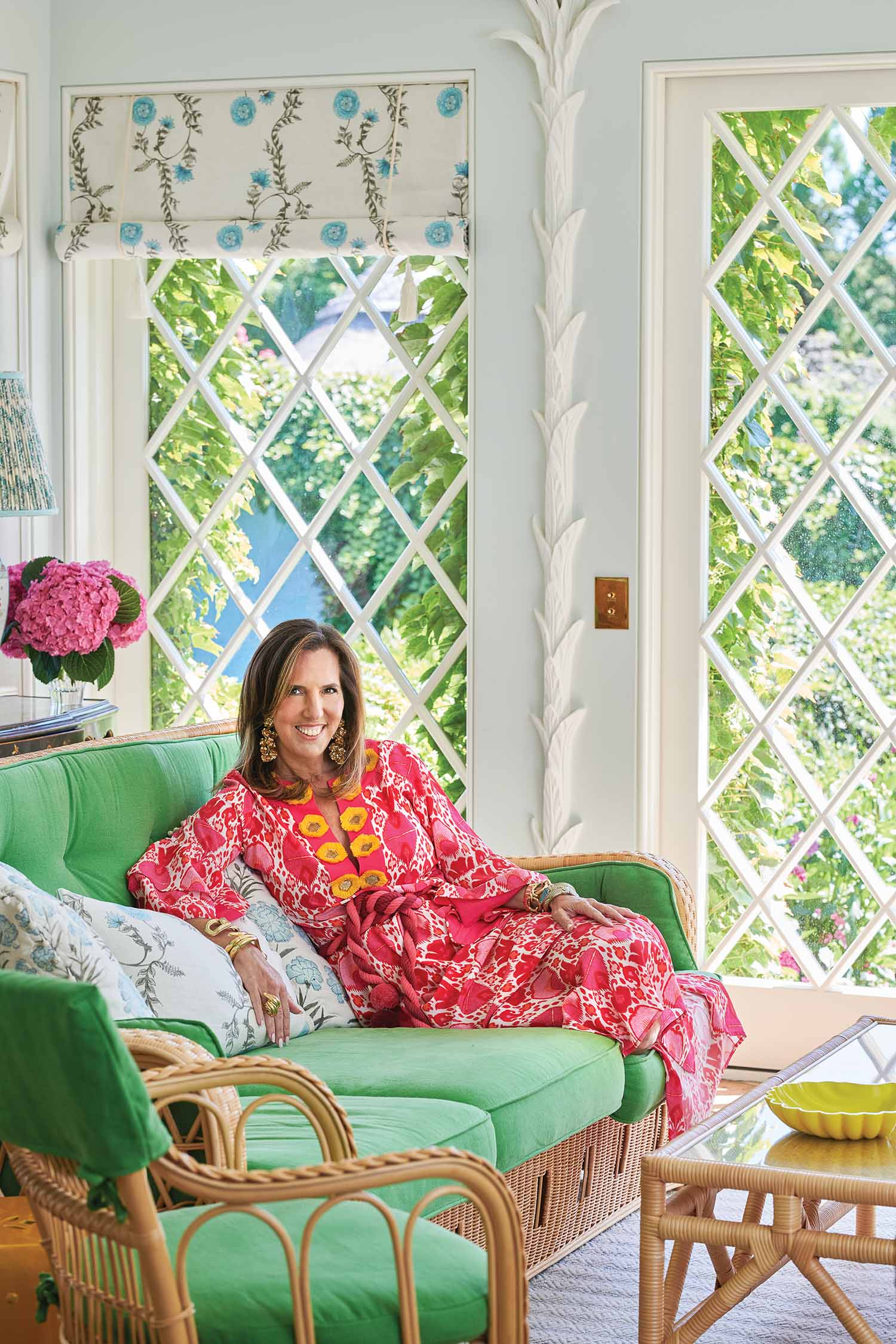
Photo by Michael Mundy
Liz relaxes in the sunroom in a caftan from her Figue fashion brand.
“It was truly a grey garden,” Anna once wrote. “The soft grey of the dunes, cement walls, and sea mists gave us our color scheme, as well as our name.”
The home was later bought by Phelan and Edith Beale but eventually fell into disrepair when the Beales divorced. Edith, known by many as “Big Edie,” was left with no resources for upkeep and a somewhat eccentric frame of mind. She and her daughter, “Little Edie,” lived in unimaginable squalor for many years until the neglected property was acquired by Sally Quinn and Ben Bradlee. The couple kept all the original furniture, including heirloom wicker pieces found in the attic, and completely restored and decorated the house for their own weekend and holiday enjoyment.
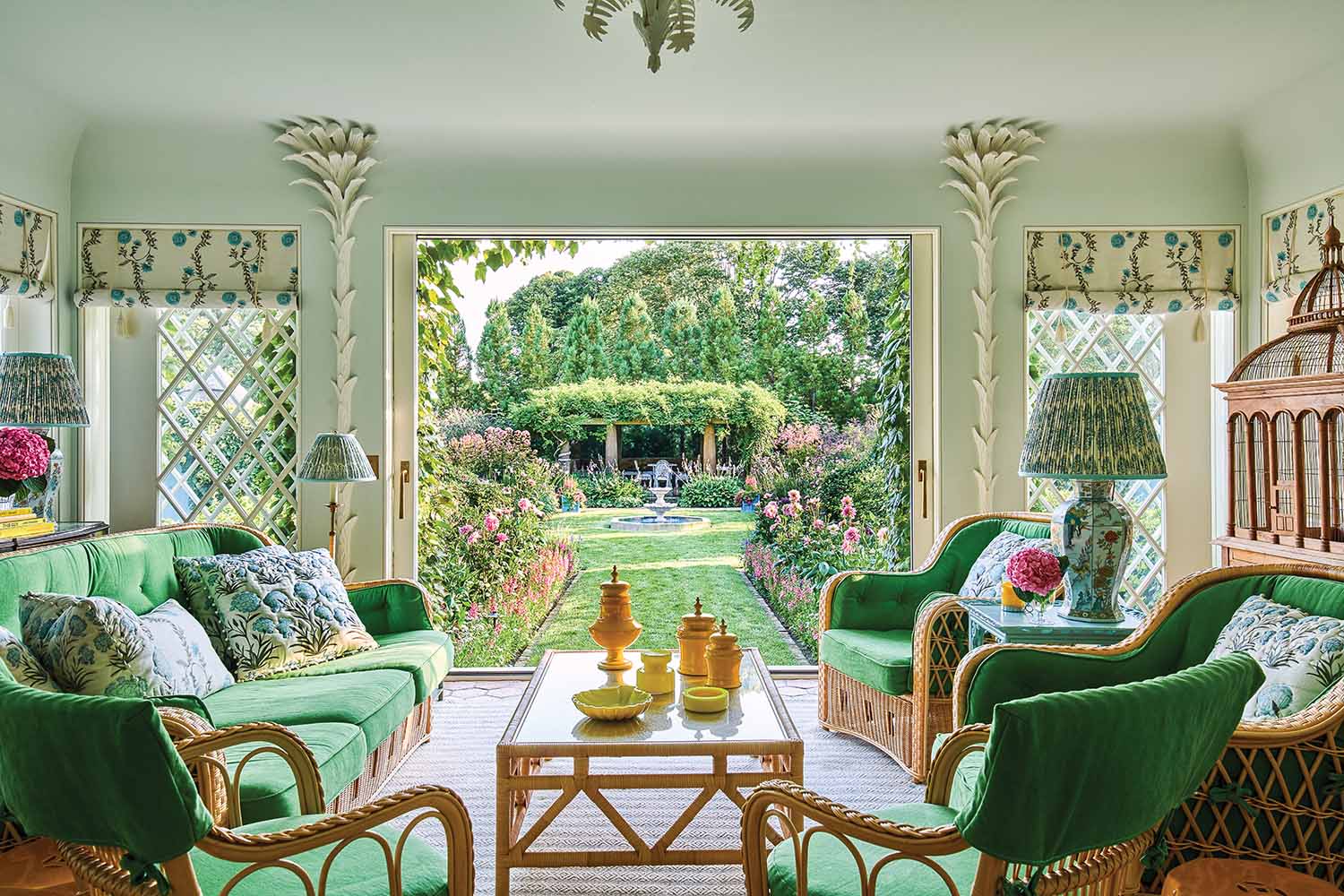
Photo by Michael Mundy
The cheerful vibe of the sunporch was achieved through a finely tuned collaboration. Architects Richard Bories and James Shearron of Bories & Shearron drew the plaster palm trees, and Mark Ferguson of Ferguson & Shamamian helped with restoring the diamond-patterned windows to the original smaller size with restoration glass. “I wanted the famous Marella Agnelli Bonacina 1889 rattan furniture, and Mark [Sikes] combined it with a bit of Soane rattan,” says Liz. Window treatments and pillows are made from recently introduced Botanica Trading floral fabric. The green seat cushions and yellow accessories were contributed by Jonathan Adler. Landscape architect Deborah Nevins planted the garden borders with dahlias and delphiniums and restored the original pergola, visible in the distance.
In 2015, Liz and her husband, a corporate lawyer, took the house as a summer rental. “It was love at first sight!” Liz says. “I knew I wanted to get my hands on it but didn’t think it would ever be possible. I had the idea to offer to rent it for the next 10 years—the closest thing to buying it. But then Sally decided to sell. Her husband had passed away, and her heart just wasn’t in it.” Liz tells of realtors trying to show her other bigger, newer houses on the beach while she batted them away with her knowing, confident “No, I want THIS one.”
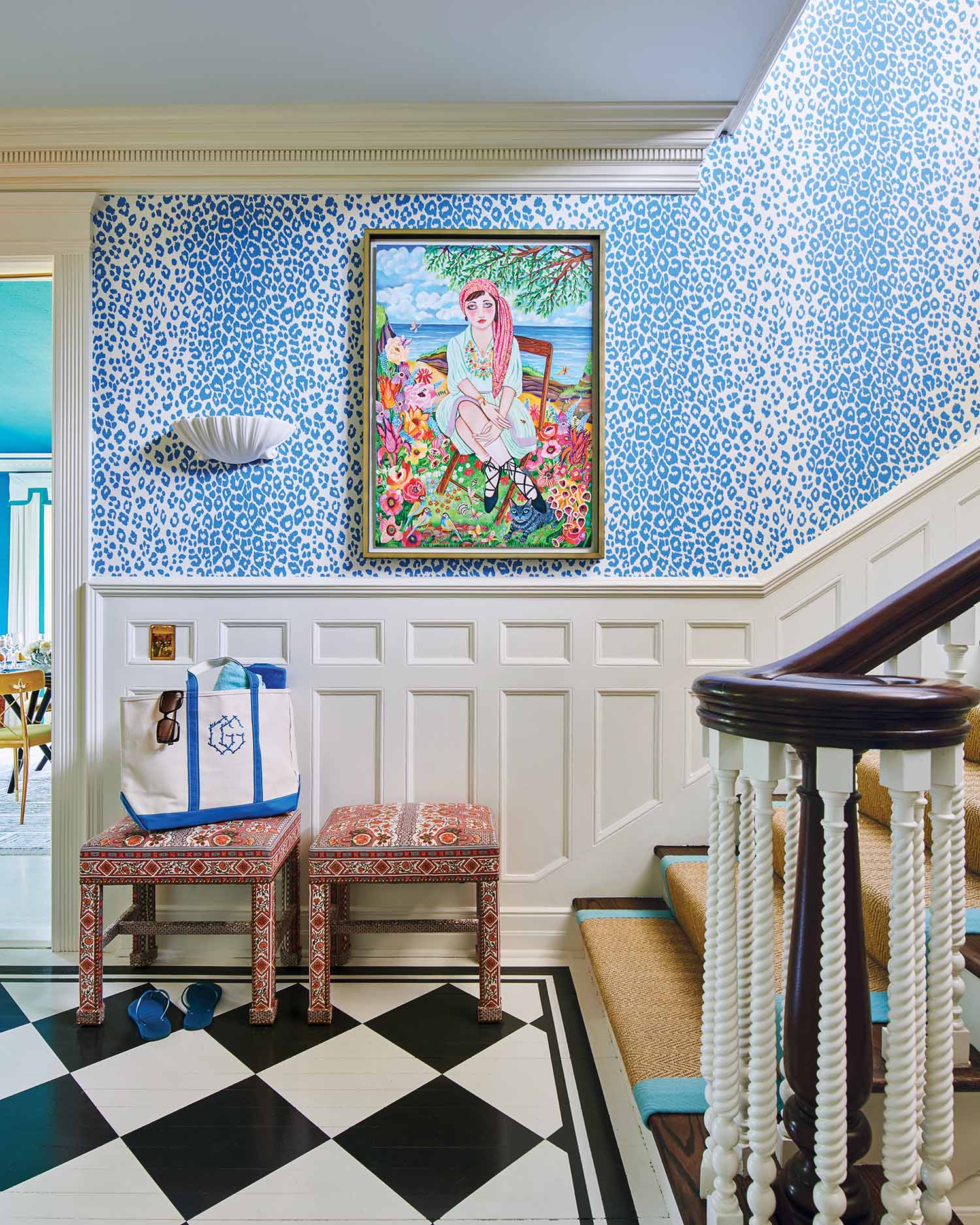
Photo by Michael Mundy
A whimsical portrait by Helen Downing of “Little Edie” hangs in the entrance hall on a leopard-print wall covering—a subtle wink at the two Edies’ infamous cat obsession.

Photo by Michael Mundy
Mark Sikes designed the China hutch. The Arjumand’s World wall covering has an Asian feel that relates to the Ginori Oriente Italiano china pattern.
The house could not have landed in better hands. A comparative literature major from Brown, Liz also had a penchant for fashion. Raised by a stylish mother on the Upper East Side of New York City, she developed a keen eye for chic. After college, she worked at Vogue and then apprenticed for a young designer. One day, while observing some of her contemporaries dressed in unflattering, muumuu-type maternity wear, she decided to draw form-fitting yet flattering clothes for expectant women. The collection took off, and Liz Lange Maternity later sold for a tidy sum to a private equity group. That instinct and imagination have been on display in Liz’s most recent, more bohemian, print-filled fashion venture, Figue. “I design for myself,” she says. “In the 90s and early 2000s, there was a cleaner, somewhat urban aesthetic that fit my life. Now, I’m in a more resort-y phase. I laughingly say that I’ve entered my caftan years.” She and everyone else.
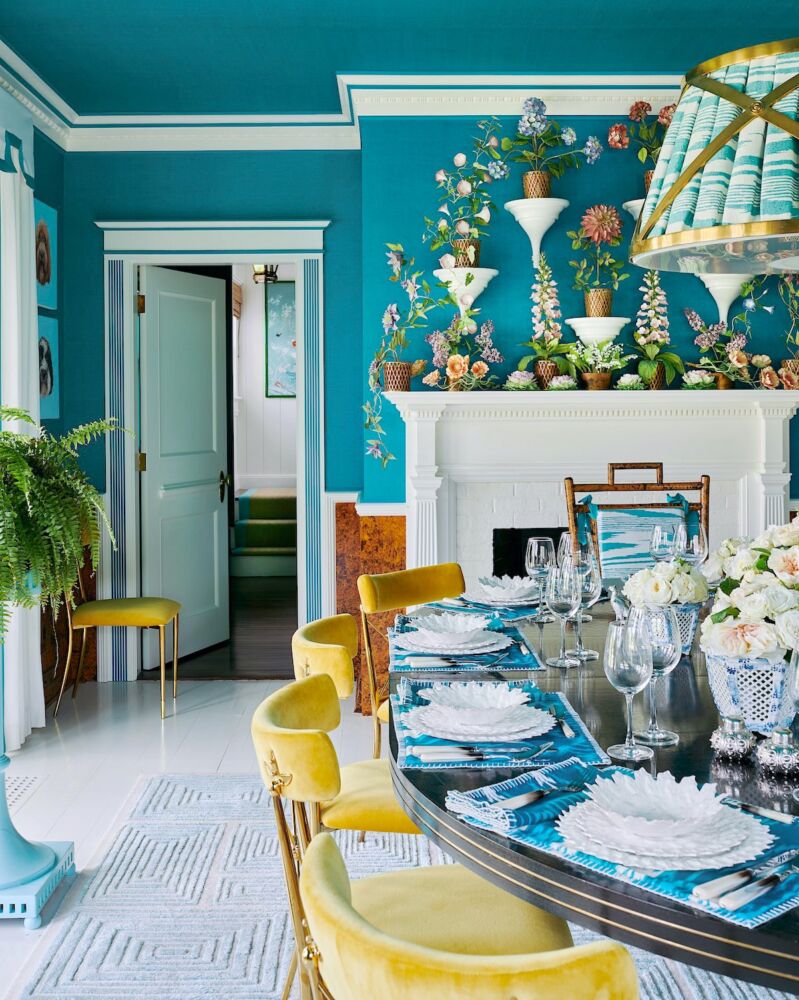
Photo by Michael Mundy
This same bold vision has translated to the restoration and redecoration of Grey Gardens. Liz, though appreciative of the history and legend of her home, acknowledges that she also just loved the house itself. Having grown up going to “the country,” as the Hamptons were then dubbed in her world, she had a soulful connection to the neighborhood and was ecstatic to discover she could return and rehab a house that embodied everything she fondly remembered of that vernacular. “I spent my childhood just around the corner and knew the area like the back of my hand,” she says. “But several of the original, quintessential, shingle-style houses had been torn down, so I was so happy to see that Grey Gardens was still standing.”
When Liz took possession of the home, not much had been changed in the 40 years since Sally and Ben had renovated it. Armed with a sophisticated aesthetic and an enviable list of design and building contacts, she set about restoring and redecorating her new home. “I was a bit intimidated to begin with,” says Liz. “Lots of people have opinions and feelings about this house. It’s almost like a public museum, and I get that. But it’s also my house, so it’s been about the balance.”
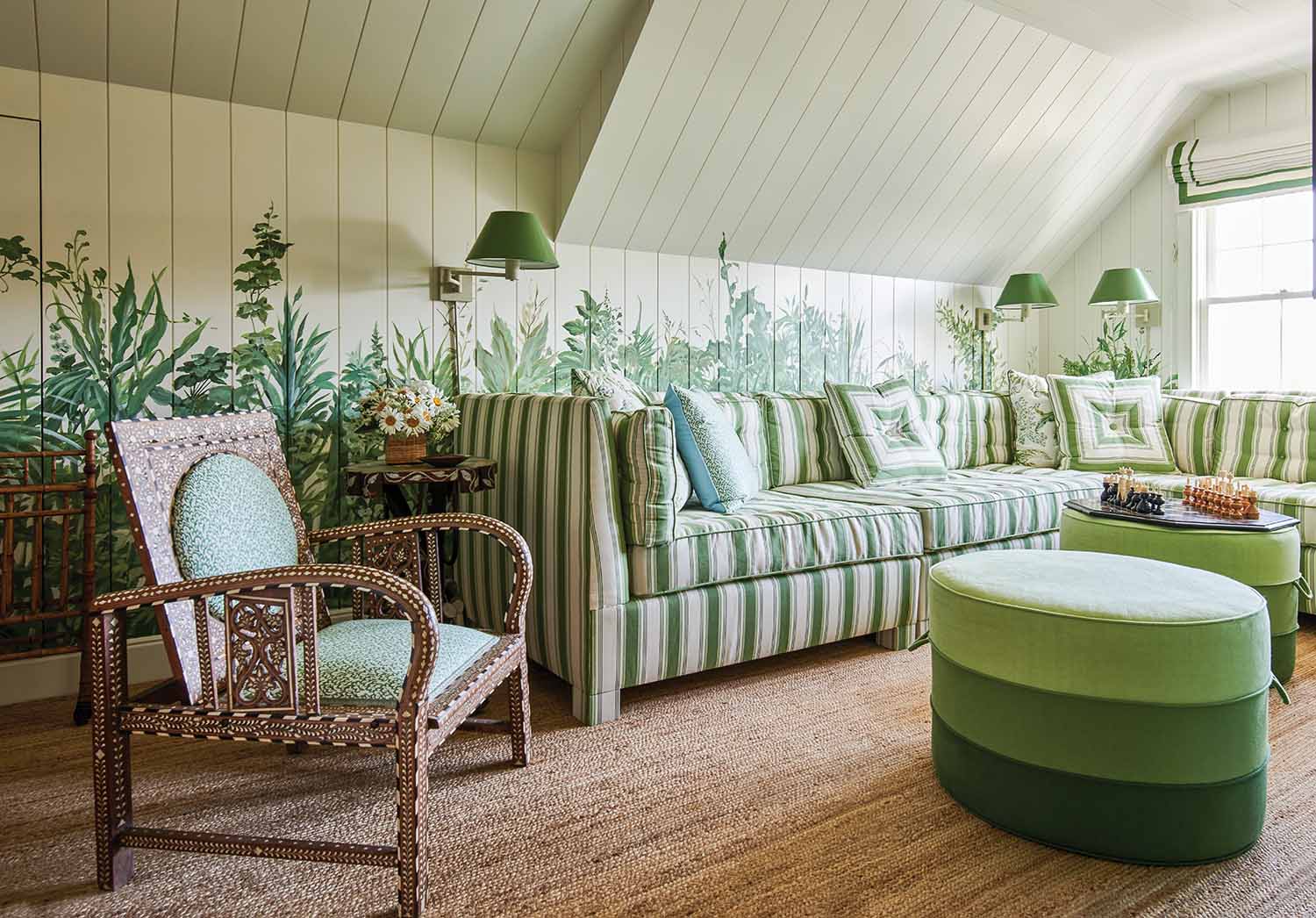
Photo by Michael Mundy
Tucked away on the third floor is a cozy sitting room with a garden mural by decorative painter Bob Christian, an inviting striped sectional, an interesting Anglo-Indian armchair, and poufs perfect for board games or seating.
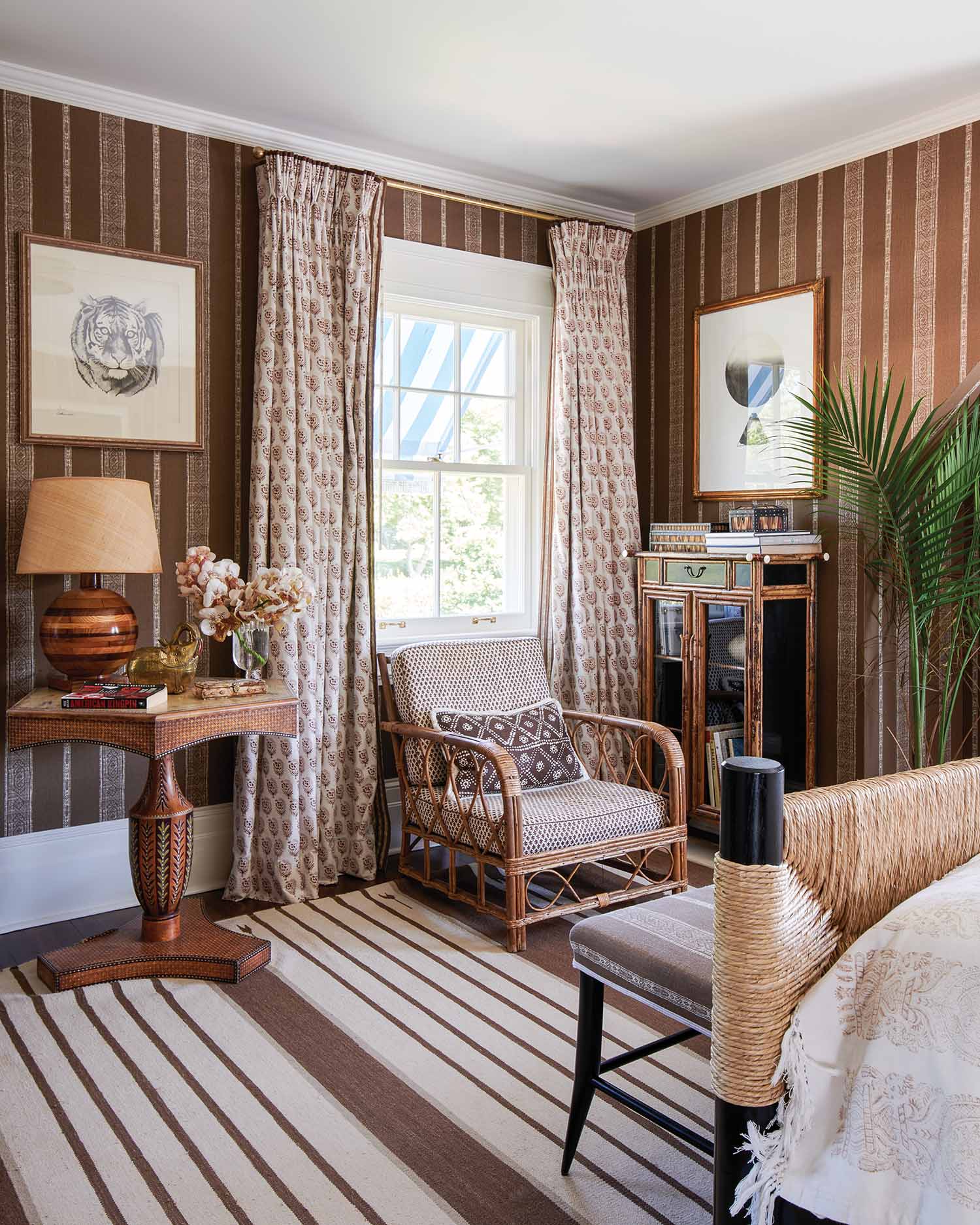
Photo by Michael Mundy
Though grown, Liz’s children still have their own spaces when home. Son Gus’s room is an interplay of stripes and Provencal prints in shades of chocolate and cream. Walls are covered in Carolina Irving’s Patmos Stripe Reverse, windows are draped in Les Indiennes’ Helene, and the chair is covered in Burmese fabric by Sister Parish Design. The natural rush-and-wood frame bed from Hollywood at Home plays nicely with the vintage rattan furniture.
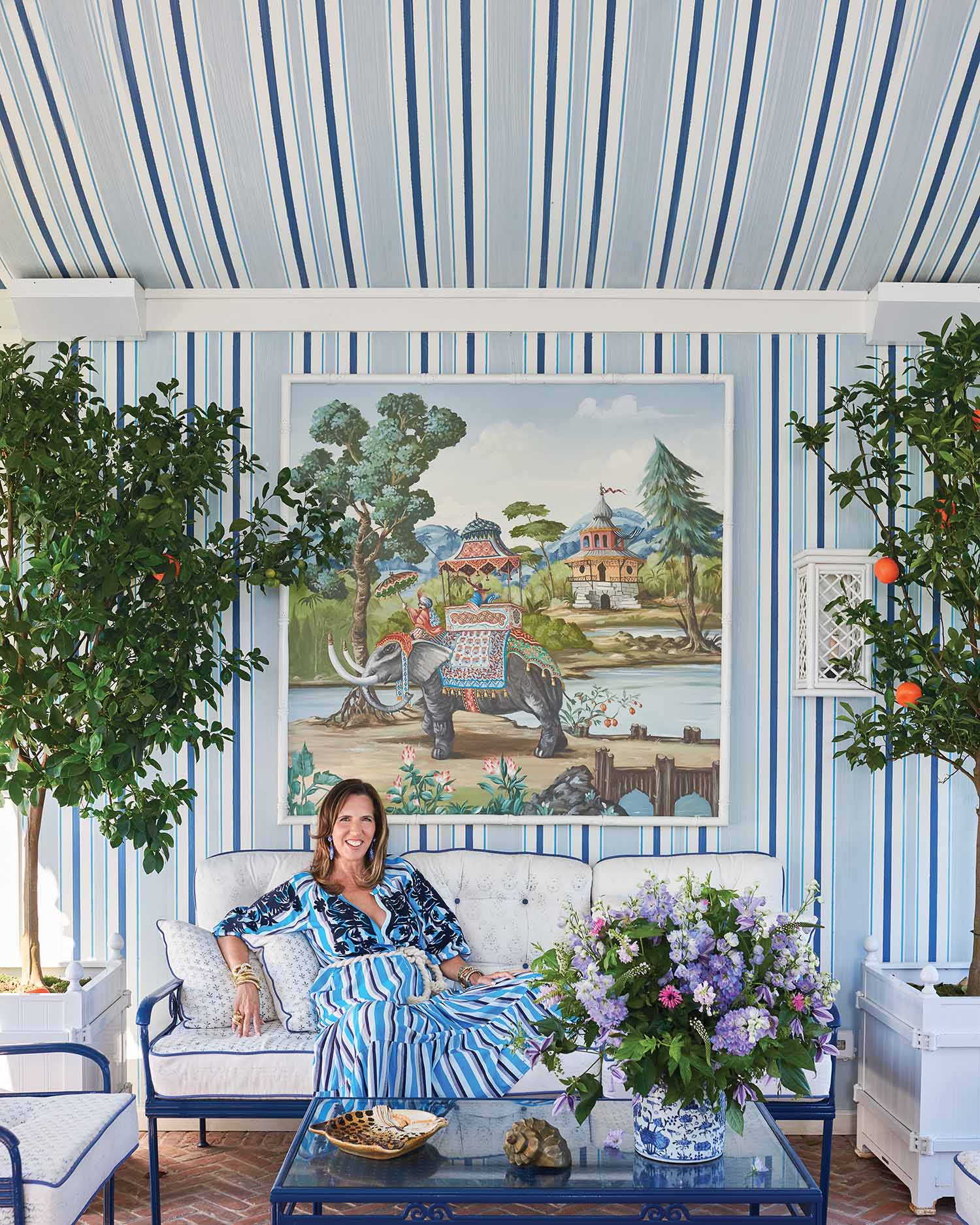
Photo by Michael Mundy
The tent effect inside the pavilion was achieved through trompe l’oeil stripes by decorative painter Bob Christian and specified by designer Mark D. Sikes. Liz, in one of her many Figue caftans, becomes part of the symphony of stripes.
She embarked on the project knowing she wanted to retain the architecture and feel of the original house. “No additions, no popping out of windows, etc. We watched the ‘Grey Gardens’ documentary over and over and would pause it and say, ‘Wait, what’s that behind her?’ We really tried to identify each fixture and picture. Our architect also knew many historical details, like the size of the diamond windows. The original ones were smaller and more expensive, but I wanted that, so that’s what we used.”

Photo by Michael Mundy
Liz’s bedroom is awash in blue flowers in a Colefax and Fowler fabric on the ceilings, walls, and windows, as well as in the Porthault blanket cover and the custom coverlet from Chelsea Editions. The poster bed came from John Rosselli.
Having witnessed the successful restoration of the nearby Arts and Crafts manse, Lasata, the childhood summer home of Jackie Kennedy Onassis, Liz knew she wanted the same architects to help in her efforts. Ferguson & Shamamian were enlisted to handle the larger, more mechanical architectural duties, including adding an entire subterranean level. Architects Bories & Shearron then took on the more decorative architectural details, such as the plaster palms in the sunroom and the fantastical pool pavilion, among other elements.
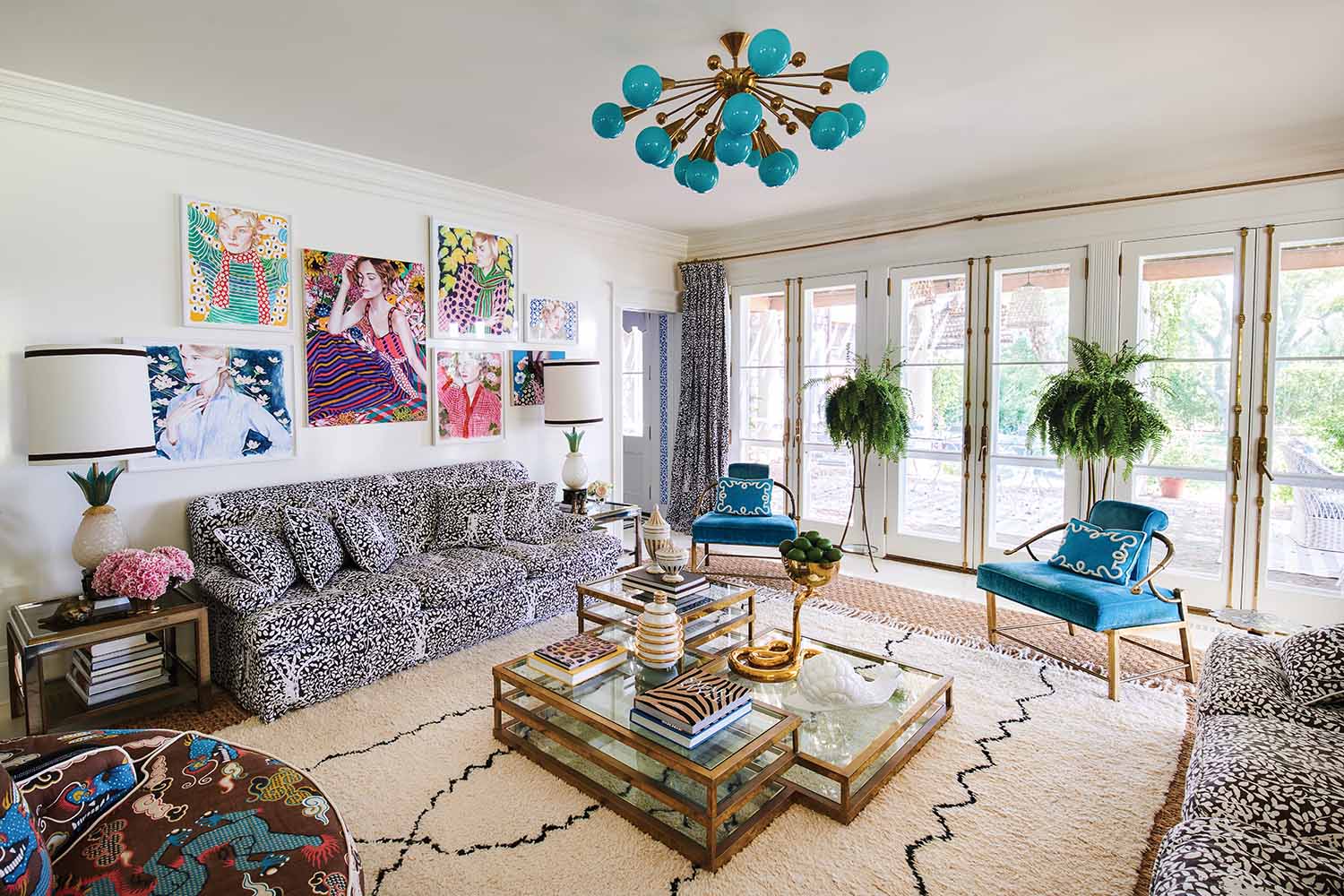
Photo by Michael Mundy
“The living room is the pièce de résistance.” says designer Jonathan Adler. “Inspired by Billy Baldwin, we used Arbre de Matisse upholstery on the curtains and sofas, juxtaposed with a '70s Italian brassand- glass table. It’s an eclectic mix, but every piece in the room has one thing in common— they’re extra. Like Liz.”
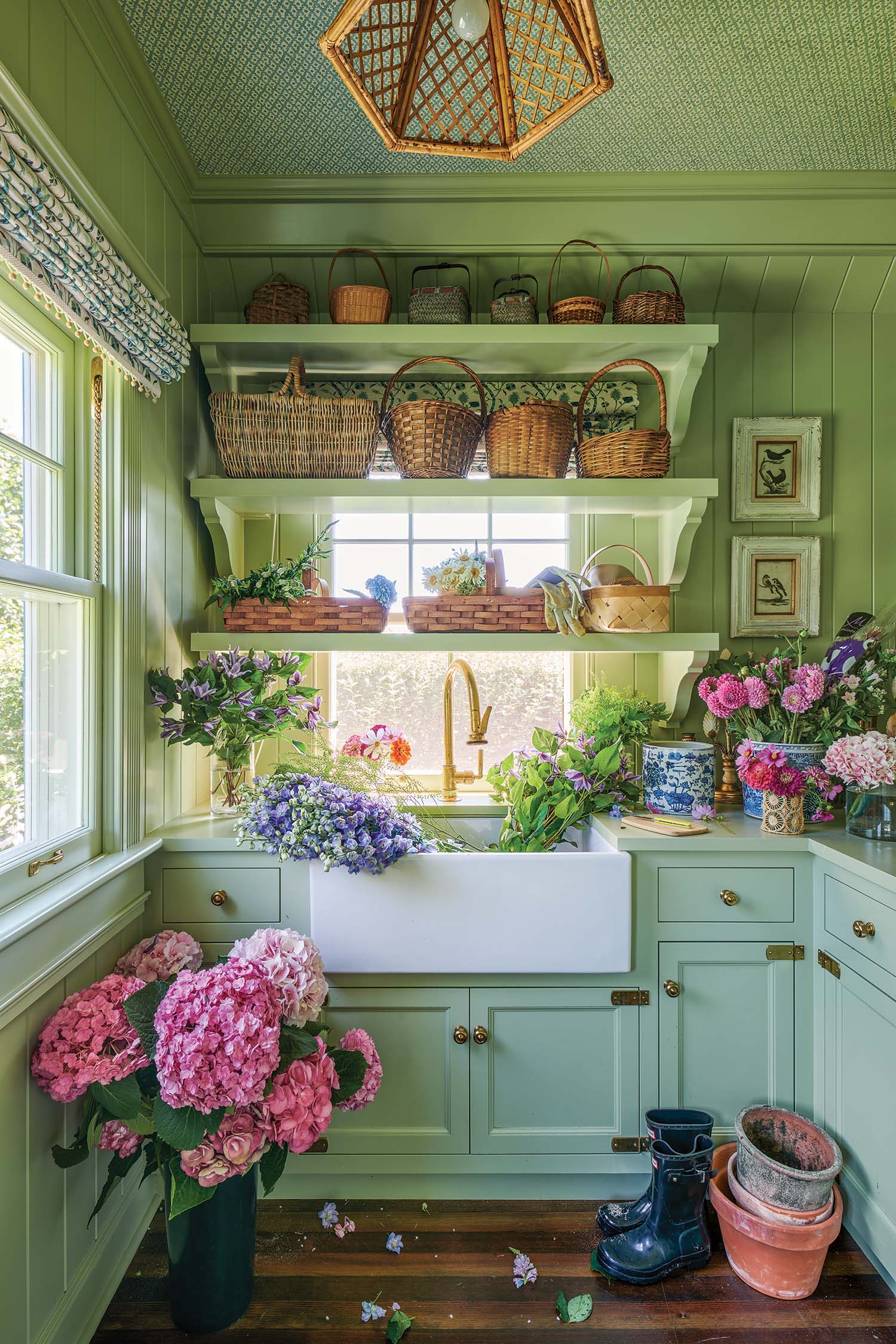
Photo by Michael Mundy
This cheerful flower room—part of a glamorous redo of Grey Gardens, the legendary East Hampton summer home to many intriguing personalities in the past—signals a bright future
An unabashed lover of color and glamour, Liz enlisted the help of potter and designer Jonathan Adler, a dear friend of hers, to reflect her personality in the public spaces. The designer is known for his use of bold color, mid-century modern shapes, and graphic pattern. “He just gets me,” Liz says. “But I also really liked what Mark Sikes was doing. I hired him to decorate the bedrooms. I really wanted a few different voices that reflected my taste—not a one-designer interior. I wanted to have a big say in the overall look.”
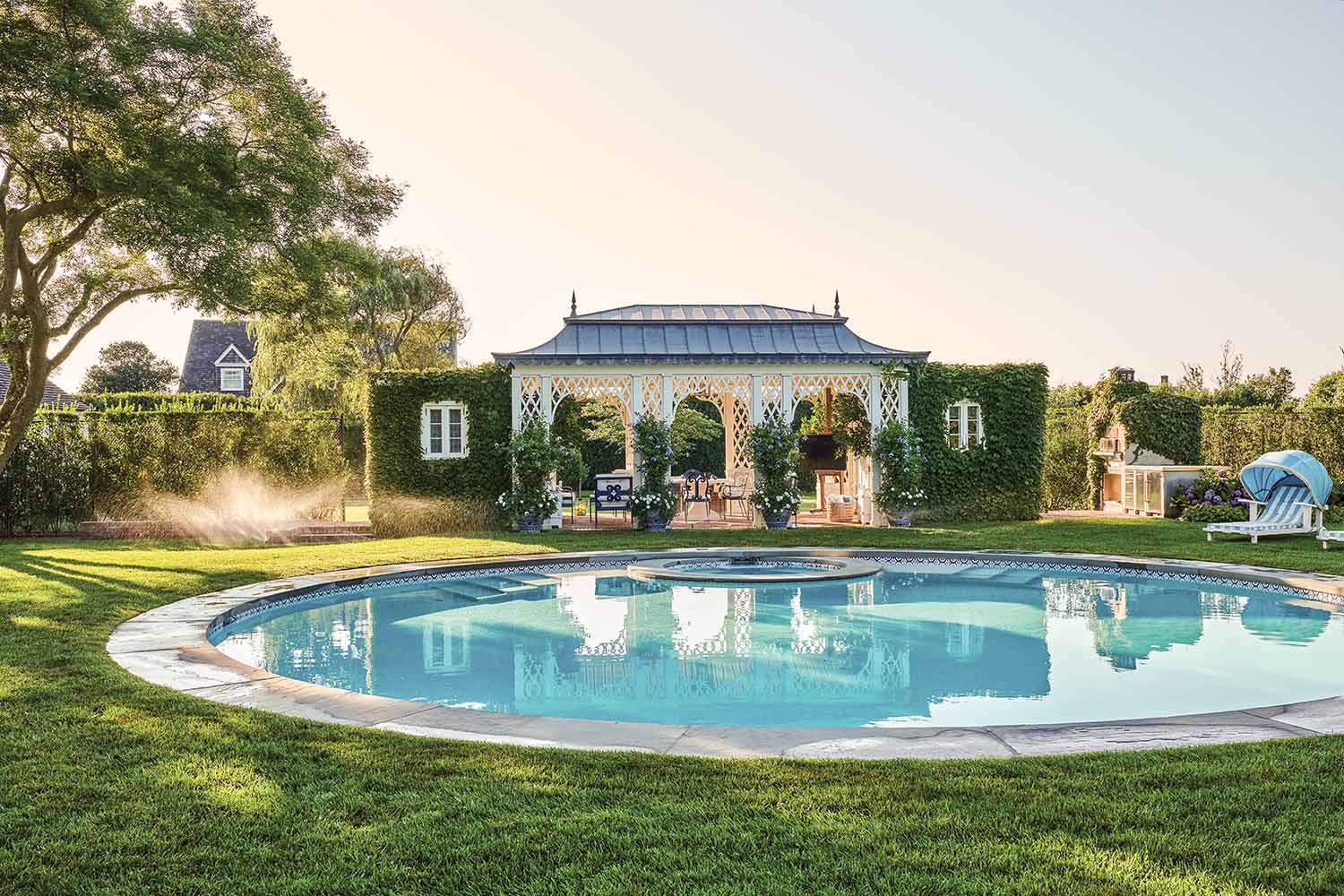
Photo by Michael Mundy
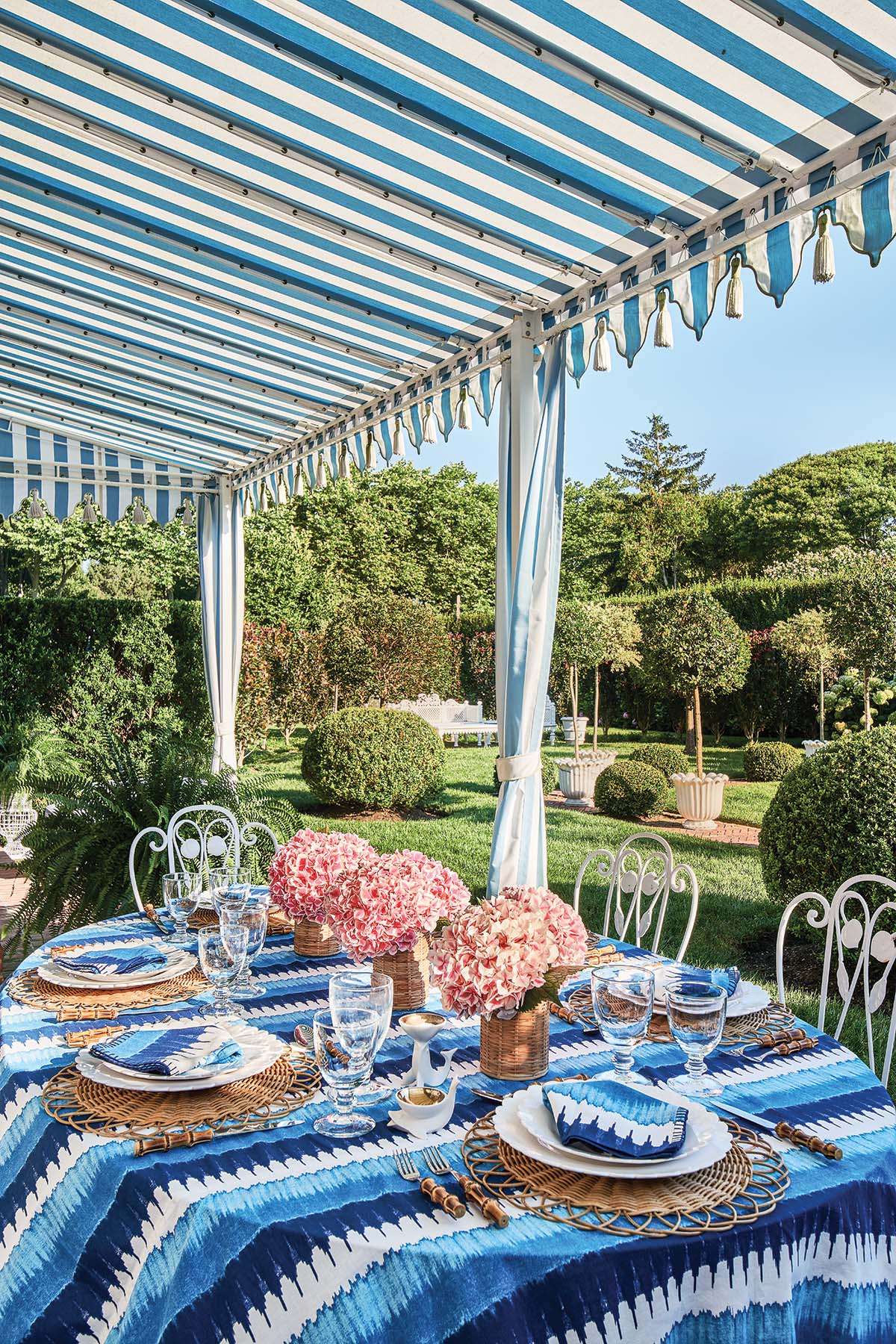
Photo by Michael Mundy
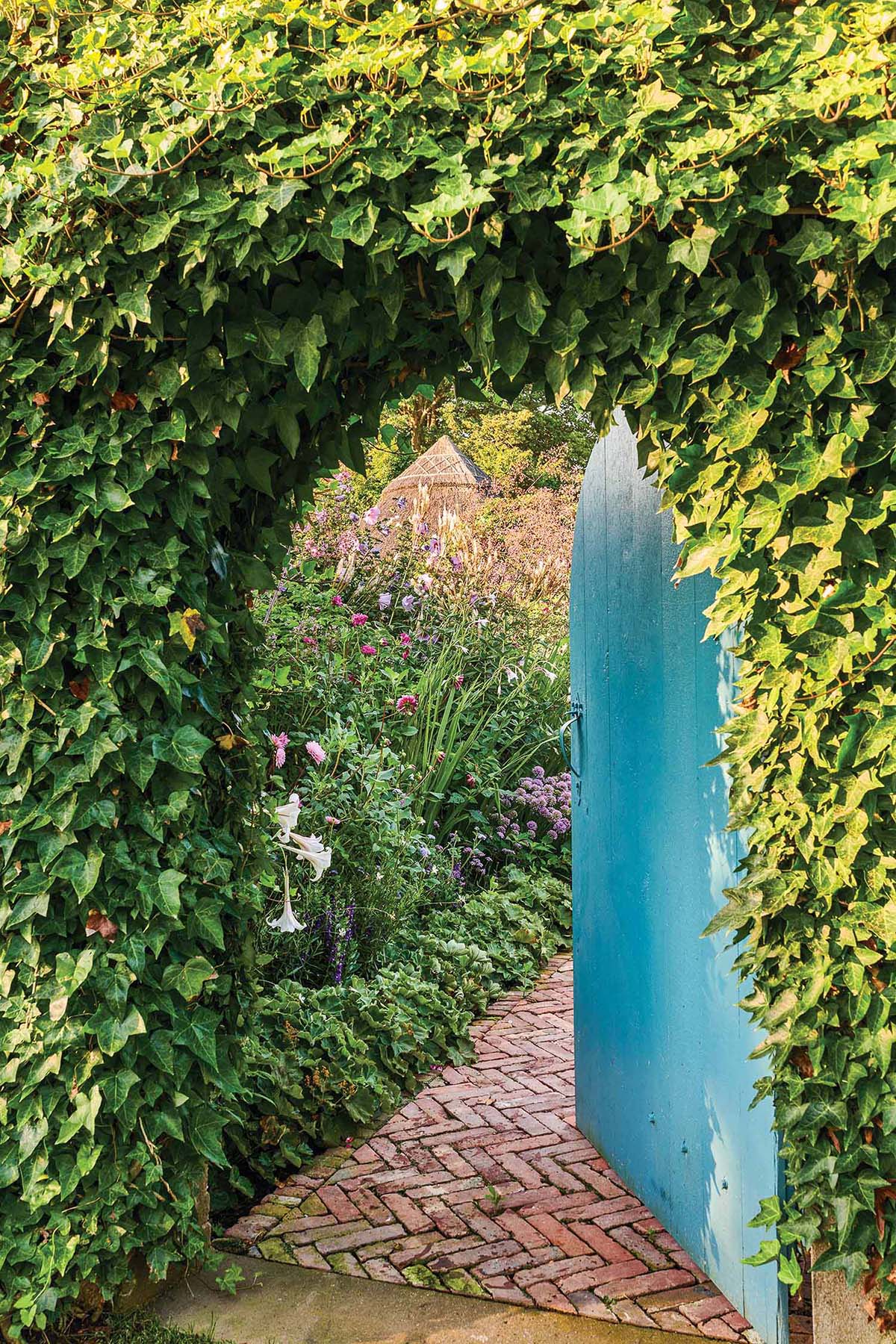
Photo by Michael Mundy
To honor the home’s past, Liz did incorporate a few quirky artistic references to the Beales. And since Little Edie had once been a stylish beauty and a debutante, she wanted to acknowledge that with a nod to elegance. Liz has always loved the sophisticated look of film producer Bob Evans’s round swimming pool, so she added one. Sikes then designed blue-and-white striped chaise longues to go along with it. He also envisioned jaunty stripes in the pool pavilion to further reflect Liz’s love of old Hollywood, and he engaged legendary decorative painter Bob Christian to paint the same stripes on the walls and ceiling for a tent-like effect.
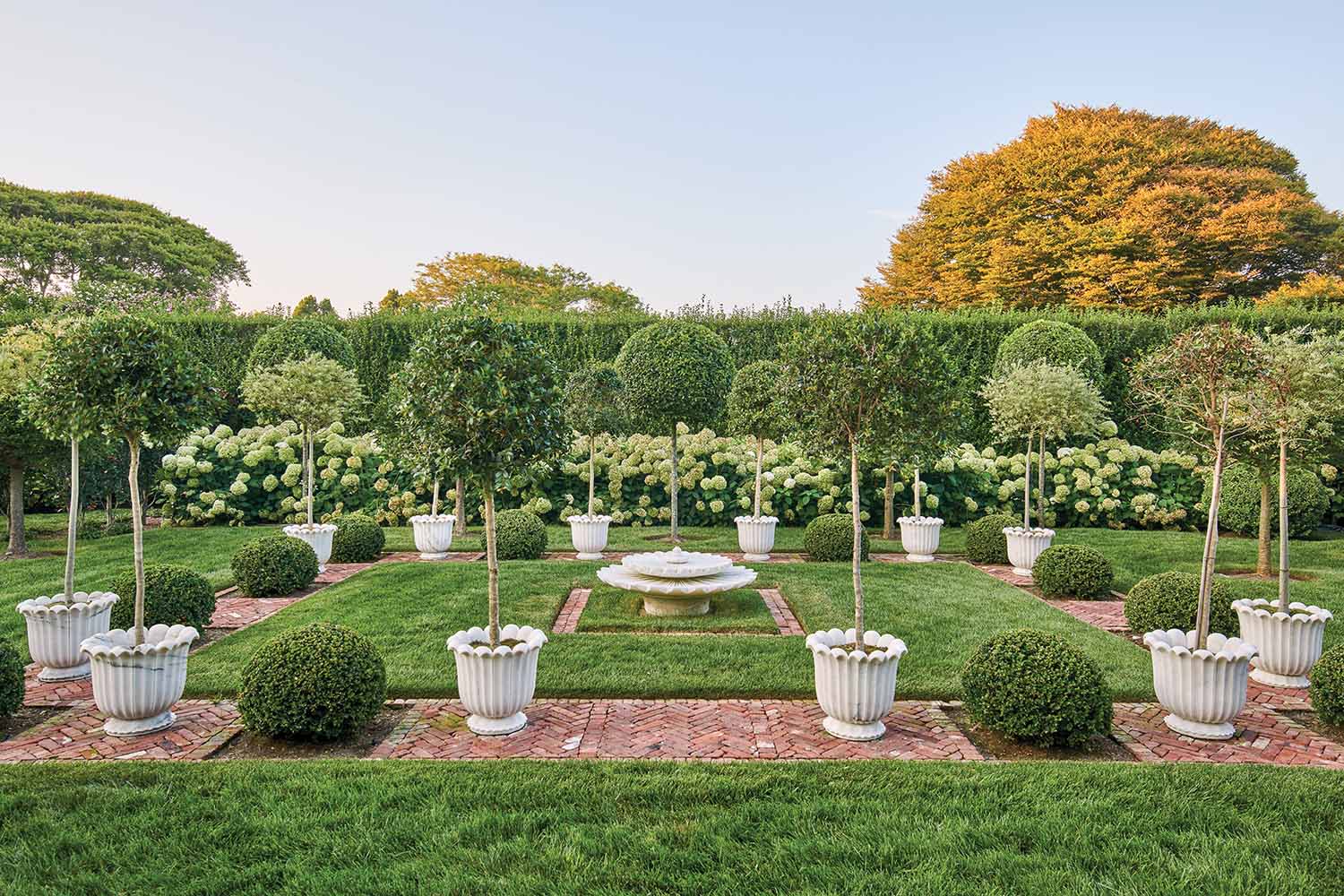
Photo by Michael Mundy
Liz was inspired to create an Indian-style garden when she found the blue Indian palace doors at John Derian. Landscape architect Deborah Nevins located a source in India to fabricate the white marble furniture, fountain, and planters.
With so much of summer in East Hampton being lived out of doors, the design team also considered the outside as much as the interior—a hallmark of Sikes’s process. Liz shares, “I’m not a gardener, but it was important to me to honor the visions of Anna Gilman Hill and others who had lived here. At the same time, I wanted to incorporate my ideas of what I liked in the garden. We saved as many trees as possible, restored all the fountains, and even kept the little ancient gravestone for a dog named ‘Spot’ flush in the ground near a hedge.”

Photo by Michael Mundy
New York-based landscape architect Deborah Nevins worked with Liz to restore Hill’s pergola, walled garden, and thatched hut that had all grown a bit tired over the years. She also laid out an extensive kitchen garden and an overall wilder English-style garden, both inspired by Liz’s visit to Babington House in England, as well as her particular fondness for Vita Sackville-West’s Sissinghurst gardens. But the new chapter in the garden story is the Indian Garden on the east side of the house just off the dining room.
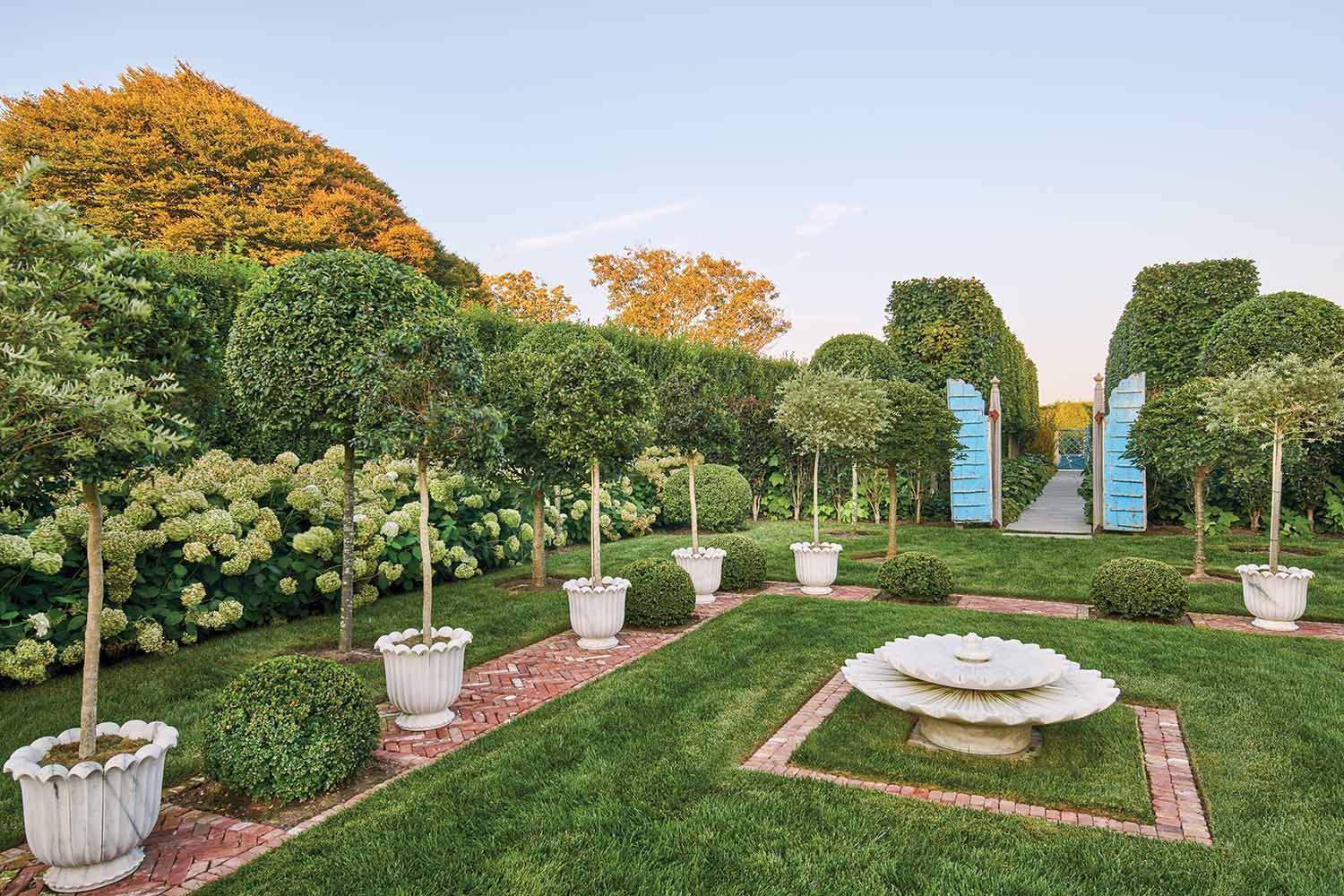
Photo by Michael Mundy
A consummate and enthusiastic hostess, Liz wanted the vista beyond the dining room to be interesting and a bit alluring. The design decision was inspired by a pair of Maya blue, vintage, Indian palace doors discovered at John Derian. “We decided to place them at the entrance to the future Indian Garden at the end of the Linden Walk,” says Liz. “Debby (Nevins) knew of a company in India that could fabricate the white marble planters, fountain, and furniture that we thought would pair beautifully with the doors, so we commissioned them.” The pieces are dramatic and unexpected for East Hampton, yet they work and even seem to reflect Liz’s recent foray into fashions with a more international profile.
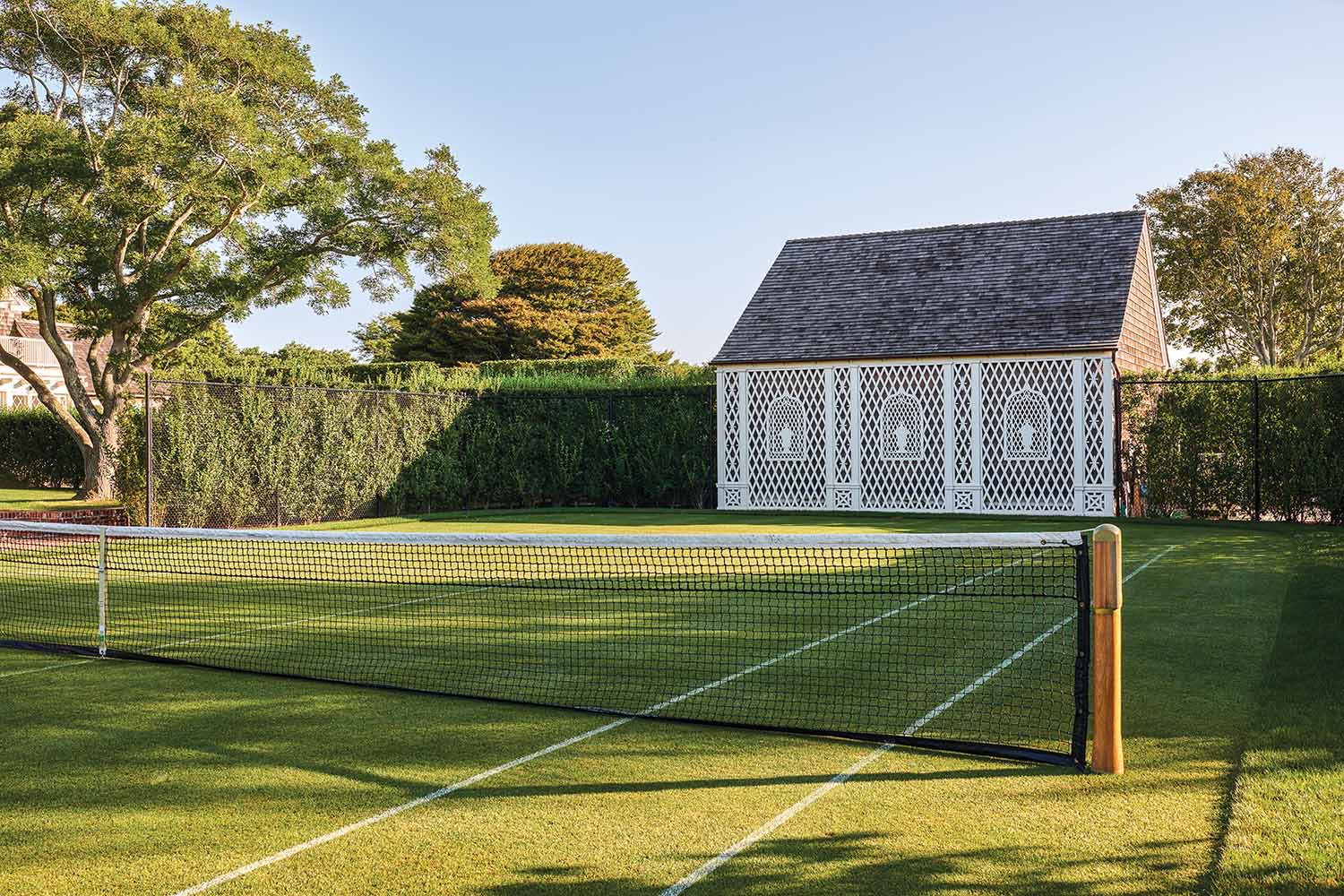
Photo by Michael Mundy
Liz installed a grass tennis court, along with a crisp white treillage from Accents of France on the carport, to evoke the glamour and leisure that she dreamt of for the outdoors.
Another voice Liz incorporates into her design scheme is that of the Bridgehampton florist Michael Grim. Having known Liz for years, starting with when he graced Liz’s childhood home with flowers for her mother, Michael understands and interprets her floral preferences beautifully. “Liz loves garden flowers and is never afraid of color,” he says. This unfussy attitude is representative of Liz’s overall ethos. “I don’t take myself—or my homes—too seriously,” she says. “I’m mostly barefoot, but that’s ‘cause I’m feral. People walk in and say, ‘Oh my, should I take off my shoes?’ And I always respond, ‘Only if you want to.’ ” One might imagine the Edies somewhere nodding in approval.
By Margot Shaw
Photography by Michael Mundy
Floral Design by Michael Grim
See more from Liz Lange on Instagram.



